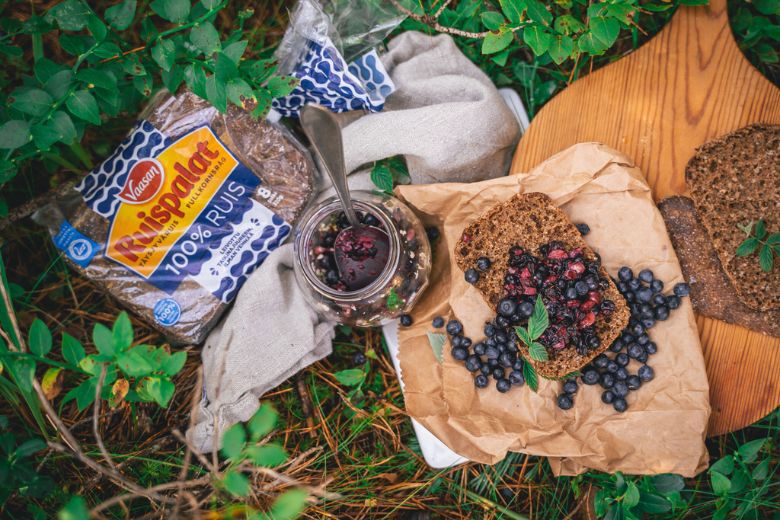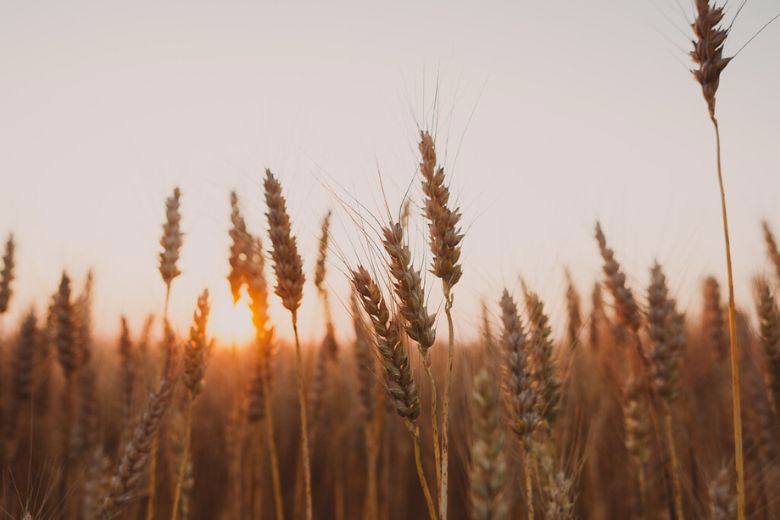Environmental impacts of bakeries
Vaasan has four bakeries of its own in Finland: in Vantaa, Kiiminki, Kuusankoski and Vammala. We have significantly reduced the carbon dioxide emissions of domestic bakeries, for example, by improving the efficiency of production, centralising the bakery network, procuring renewable electricity and improving energy efficiency. All Vaasan bakeries are supplied with electricity from renewable energy sources, and the aim is to utilise the heat released from baking in production.
The energy needed by bakeries is mainly produced with electricity and liquefied petroleum gas. Our first electric line, Viljatar, was commissioned at the Vantaa bakery in autumn 2022, and in the spring of 2025, we have electrified the second previously gas-powered baking line. Future plans include electrification of production lines as the current lines begin to reach the end of their service life.
Aiming for net zero emissions in the value chain by 2050
We are committed to Lantmännen's Group-wide emission reduction targets and Lantmännen Unibake's science-based climate targets. In addition to the fossil-free target for our own bakeries, we aim for net zero emissions by 2050.
Towards science-based emission reductions
Vaasan is committed to doing its part to reduce climate emissions and mitigate climate change in accordance with the Paris Climate Agreement. In the summer of 2023, the Science Based Targets Initiative approved the following science-based climate targets for Lantmännen Unibake:
- The energy-related Scope 1 and Scope 2 emissions of the company's own operations will be reduced by 50% by the end of 2030 compared to the 2019 level.
- Scope 3 emissions related to sourced raw materials and services in the value chain will be reduced by 30% by the end of 2030 compared to 2019 levels.
- 72% of suppliers (calculated on the basis of emissions) will set their own science-based climate targets by the end of 2027.
- Net zero emissions will be achieved throughout the value chain by 2050.
In addition to climate goals, we will find out what would be the indicators and goals that would be essential for our operations to support our nature work.
At best, climate and nature goals support each other – for example, measures that improve grain yields and farming efficiency improve land use, prevent nutrient runoff into waterways and can free up arable land back for nature. Utilising the bread waste generated in the production of biogas and recycled fertilisers can reduce the need for fossil-based fuels and fertilisers.
The planetary food chain of the future will operate according to the principles of the circular economy, which means that as little waste as possible is generated, energy is renewable and nutrients circulate from field to table and back to the field.

Managing and utilising bread waste
Wasting edible food is one of the biggest sustainability issues in food production and consumption. When edible food is thrown away, the food has been produced unnecessarily, and it has thus burdened the environment unnecessarily. As a large bakery, we bear a great responsibility. For us, the joint effort against food waste is about valuing the resources and work of food and the entire supply chain, as well as caring for the environment. Vaasan has been working for a long time to reduce waste in production. We aim to prevent food waste especially in our bakeries, but also in shops and households.
In addition to the fact that some production waste is generated in the production process itself, waste in the production of fresh bread has traditionally been maintained by the difficulty of forecasting: Freshly packaged bread is baked almost non-stop, and for scheduling reasons, the quantities to be baked are decided before the next day's orders come in from the stores. Bakeries will inevitably experience some so-called overbaking if the orders placed in stores do not match the forecast used in production planning.
The most important waste prevention methods in production are sales forecasting accuracy, staff training, waste projects to identify process deviations, and technical investments in production.
Towards halving food waste
We have set a goal to halve the edible bread waste in our own operations by 2030. In 2023, we took a significant step forward on this path. Thanks to advances in product development, we were able to revolutionize the delivery model for fresh bread, and now Vaasan breads are also delivered to stores the day after the baking day. The new delivery method cut up to a third of the waste of finished products on an annual basis.
Leftover bread is used
We donate leftover bread from orders to food aid operators and deliver some to the Lantmännen Group's Agro Recycling plant in Kotka. At the food waste recycling plant, the bread waste is processed and then delivered to the Lantmännen biorefinery in Norrköping, Sweden, where it is used to produce bioethanol, among other things.
You can save cheap bread from bakery shops
The bakery shops in Vaasa are also involved in the ResQ Club, whose surplus food app allows consumers to buy surplus bread bags and pick them up from the bakery shop.
Transport
Fresh Vaasa bread is transported to shops around Finland six days a week, which is why reducing emissions from delivery transports plays a major role in our climate work. Optimising transport is a precise task, as the right products must be in the right place at the right time.
Vaasan does not have its own transport equipment, but reliable partners are responsible for transports. Over time, the number of transport kilometres has decreased from around 18 million kilometres to less than 9 million kilometres per year by optimising routes and organising joint transport with other bakery operators. In shared transports to the same stores, all bakers win, and fuel and emissions are saved compared to company-specific separate transports.
The distribution equipment is constantly evolving. The transport efficiency of the bread has been improved by acquiring 32-metre-long HCT (High Capacity Transport) trucks with a larger transport capacity. Several trucks have been replaced by diesel, which is powered by lower-emission, domestic biogas. In the coming years, the goal is to increase the share of gas-fuelled vehicles, which means that trips can be made with low-carbon biogas. In addition, the optimisation of routes will continue to be carried out in order to reduce transport kilometres.
Packaging
The most important function of bread packaging is to protect fresh bread from drying out, breakage and spoilage, and thus prevent waste both on the way from the bakery to the store and at home. Although plastic packaging is criticised, and globally plastic ending up in nature and seas is a significant problem, plastic is so far the best packaging material to protect fresh bread from food waste, a significant climate hazard. Up to a third of the food produced ends up in waste, and food produced unnecessarily burdens the climate and nature particularly unnecessarily – much more so than properly sorted and recycled plastic packaging.
Sorting at home is the key to a circular economy for plastics
We encourage you to reuse a plastic bread bag: Even one new use can halve the carbon footprint of a bread bag if you avoid using a new bag. Finally, it is important to sort the bag into plastic recycling at home so that the valuable plastic raw material of bread bags can be used as a secondary raw material. Bread bag closures can be sorted into metal or plastic recycling according to the material of the closure.
Packaging is constantly being developed
By the end of 2030, our goal is to introduce fully recyclable packaging – including a bag closure – and to replace fossil plastic in packaging with recycled or renewable raw material.

Lantmännen's Climate & Nature farming programme
Based on the carbon footprint calculation we commissioned, more than 60% of the average carbon footprint of Vaasan Ruispalot is generated in primary production, especially from the use of fertilizers and fuel for machinery. That is why Vaasan is involved in Lantmännen's Climate & Nature programme, which reduces the climate impact of domestic rye cultivation and supports biodiversity, together with farmers. The aim of the programme is to ensure the vitality of rye and other cereals also in the future by promoting more sustainable and profitable farming methods. The farmer will receive a separate price premium for their actions under the programme.
The Climate & Nature programme implements concrete measures in the field: farmers use biofuels instead of fossil fuels in their machinery and fertilisers with a lower climate impact in the fields. Carbon sequestration in the soil also plays an important role. In addition to grain, carbon-sequestering undergrowth will be sown in the fields, and flowering zones will be placed on their edges for pollinators and uncultivated areas for birds.
The Climate & Nature programme is constantly being developed on the basis of the latest information and research. You can read more about the program on Lantmännen's website.
Water responsibility can only be achieved through cooperation
In Finland, nutrient discharges from primary production in the food chain – excessive fertilisation, nutrient runoff and manure from the animal industry – have a particularly strong impact on one water body: the catchment area of the Archipelago Sea. Eutrophication is such a serious problem in the region that it is in red on the EU's list of aquatic biotopes. We are involved in the Water Responsibility of Food Chains in the Archipelago Sea catchment area project of the Centre for Economic Development, Transport and the Environment for Southwest Finland, which aims to reduce the nutrient load in the area and thus support the biodiversity of aquatic nature.



